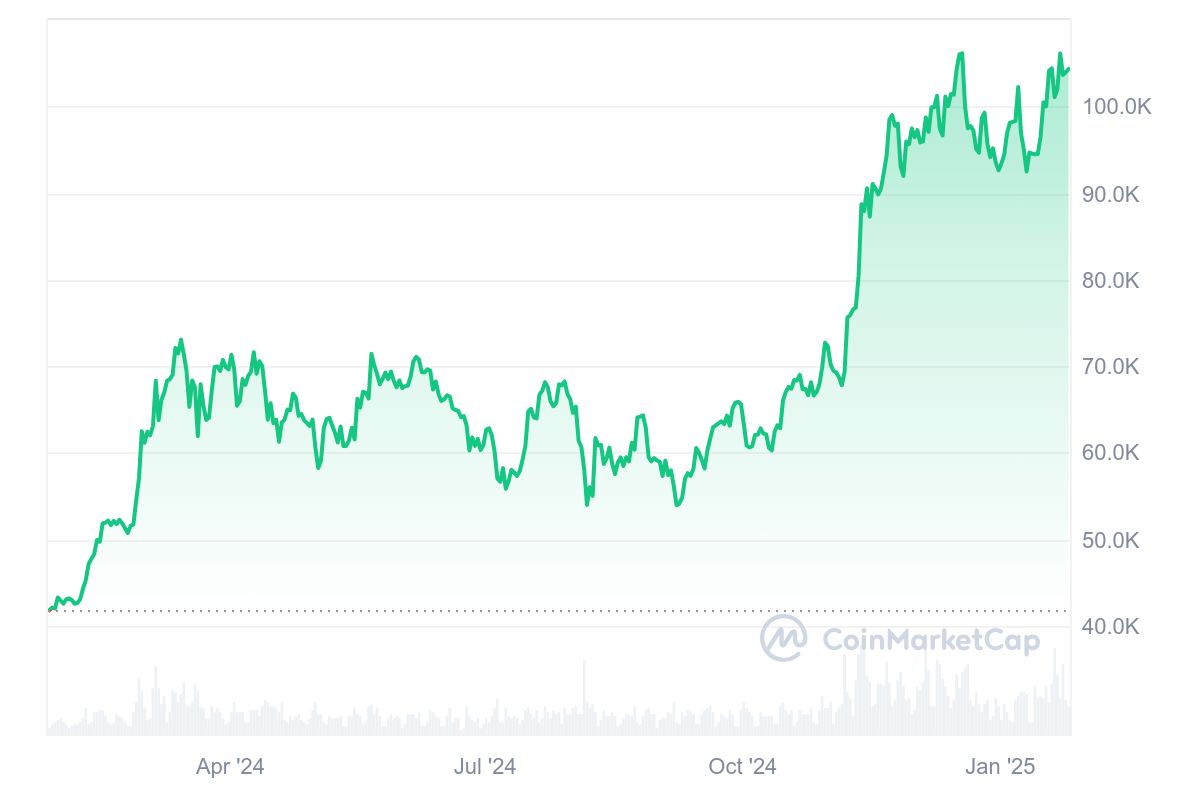The Impact of Trump’s Presidency on Bitcoin
The Impact of Trump’s Presidency on Bitcoin: An Analysis of Policies and Market Dynamics
Introduction:
Since Donald Trump assumed office in January 2017, significant changes have taken place in the U.S. economic policies and financial regulatory frameworks. These changes have not only affected traditional financial markets but have also had a profound impact on digital currencies, particularly Bitcoin (BTC). Under Trump’s administration, Bitcoin has experienced various phases of volatility and growth, often closely tied to economic policies, market sentiment, and global political dynamics.
BTC Chart

View Bitcoin Price Chart
1. Tax Reforms and Bitcoin’s Taxation
Trump’s tax reform lowered corporate tax rates, increasing liquidity in U.S. markets. This led to more funds flowing into riskier assets like Bitcoin. While the reforms didn’t target cryptocurrency, they helped boost Bitcoin’s value.
The Trump administration took a cautious approach to crypto regulation. The IRS required investors to report Bitcoin profits, making many more cautious about potential tax issues.
2. Regulatory Uncertainty for Cryptocurrencies
Under Trump, the regulatory framework for cryptocurrencies remained unclear. The administration didn’t aggressively target crypto, but no clear structure was established. The SEC and CFTC debated whether Bitcoin should be considered a security.
This uncertainty led to market volatility. Investors were unsure about future regulations, but the lack of clarity also allowed the crypto market to grow more freely.
3. Trade Policies and Bitcoin as a Safe-Haven Asset
Trump’s “America First” policy and trade tensions with China created global uncertainty. Many investors turned to Bitcoin as a “safe-haven” asset. During the U.S.-China trade war, Bitcoin attracted those seeking stability outside traditional markets.
Although the administration didn’t take a clear stance on crypto, Bitcoin’s decentralized nature made it more attractive during economic instability.
4. Bitcoin’s Speculative Surge
Trump’s presidency coincided with Bitcoin’s speculative surge in 2017. The price skyrocketed from under $1,000 to nearly $20,000 by year’s end. Media attention and speculative investment drove this increase.
Trump’s comments impacted market sentiment, even though his administration didn’t actively promote cryptocurrencies. Still, global economic policies under his leadership fueled Bitcoin’s rise.
5. The Future of Cryptocurrency
Trump’s term has ended, but his policies continue to shape Bitcoin’s market. From Bitcoin’s safe-haven appeal to its speculative growth, his administration left a mark.
As regulation evolves, Bitcoin’s role as a store of value may continue to attract investors. Trump’s presidency offers valuable insights into the intersection of government policy and digital assets.
Conclusion
Bitcoin’s rise and the evolution of the U.S. labor market symbolize the transition to a technology-driven global economy. These interconnected trends present both challenges and opportunities, highlighting the need for innovation, collaboration, and adaptation across industries. By embracing these changes, we can build a more resilient and inclusive economic future.
If you’re ready to take the next step in Bitcoin investment or have any questions, we’re here to help. Contact us now, and our team will assist you!